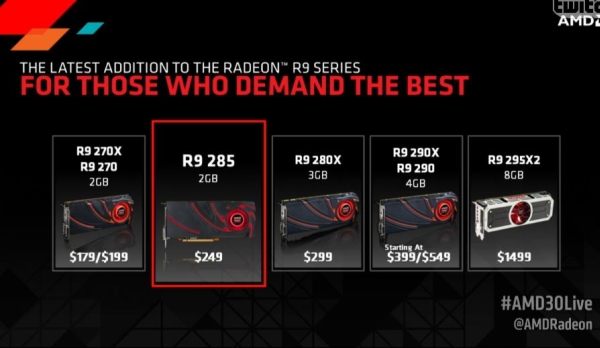Index

Review: More power in compact package
Today we will take a look at the PowerColor TurboDuo Radeon R9 285. The card is based on AMD’s new Tonga GPU, launched on September 2nd. You can view the Tonga GPU as a “light” version of the Hawaii GPU.
Because Hawaii is the high-end chip and Tonga is mainstream part, the latter has fewer shader units, less memory, a narrower memory bus and some other performance related chip parts were also sacrificed. Both GPUs support TrueAudio, FreeSync and Mantle.
TrueAudio and Mantle are implemented in only a few games and to use FreeSync we need a new FreeSync capable monitor – and those monitors are still not available. We decided to point this out because it could be a factor for some potential customers, depending on what they are upgrading from. For some the new Tonga series could be a great choice, but others may not be impressed by TrueAudio or Mantle. In terms of performance, Tonga products should roughly be on par with the R9 280 and the GTX 760.
PowerColor decided to add a bit of value to the TurboPro R9 285 with a custom design and a factory overclock. The TurboDuo cooler is quiet and it performs well, while Tonga promises to be a good overclocker. We will take a closer look at both aspects of the card a bit later.
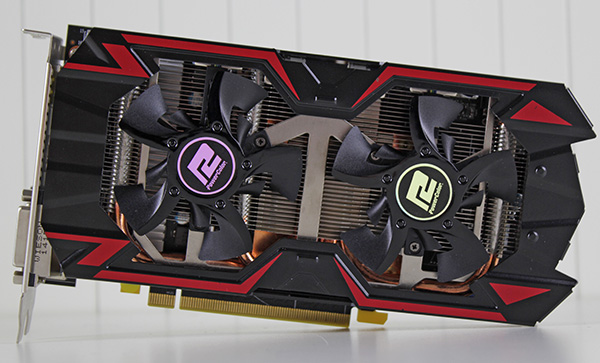
The TurboDuo cooler should make it a bit easier to score high clocks thanks to enhanced cooling performance and stability.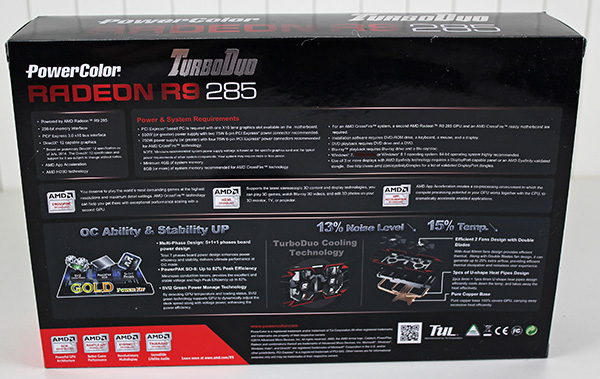
And now some brief overview of the new GPU. The AMD Radeon R9 285 graphics card is based on the Tonga Pro GPU with 1792 Stream Processors. It was launched on September 2nd with a $249 price tag.
The new R9 285 will replace the old, Tahiti Pro based R9 280 graphics card and competes directly with Nvidia's GTX 760 graphics card. All AMD AIB are allowed to launch their own custom designs from day one.
The GPU packs 1792 Stream Processors, 112 TMUs, 32 ROPs and a 256-bit memory interface which is paired up with either 2GB or 4GB of GDDR5 memory. The reference clocks for the AMD R9 285 are set at 918MHz for the GPU and 1375MHz (5.5GHz effective) for the memory. The Tonga Pro GPU is made on the 28nm process and is more power-efficient, with a 190W TDP (R9 270X has 180W TDP, R9 280 has 200W TDP and R9 280X has 250W TDP).
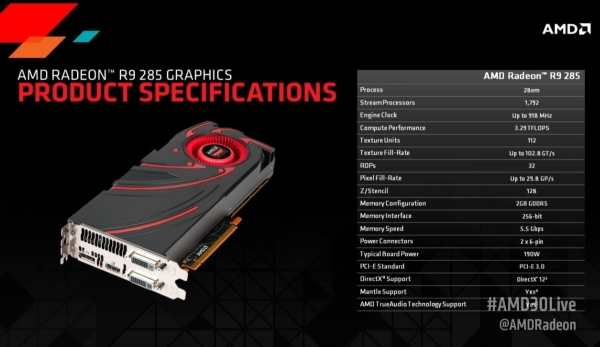
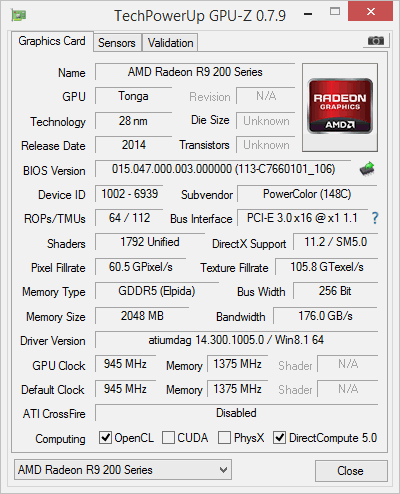
According to AMD's own product slide, the Radeon R9 285 should fit between the R9 270X and the R9 280X, at least until AMD officially launches the fully enabled Tonga XT GPU with 2048 Stream Processors which should replace the Tahiti XT based R9 280X.